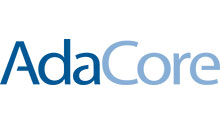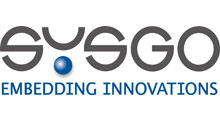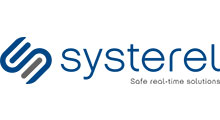Invited Talks
Abstracts for invited talks are as follows.
Speaker: Airy Magnien, UIC, France
Title: RailTopoModel - a cornerstone to foster the federation of railway digital models
Abstract
RailTopoModel (RTM) stands for a project initiated in 2013 by several European railway companies. It led to the publication of RTM 1.0 by UIC in April 2016. Its kernel addresses the issue of providing a single repository for railway infrastructure description, that is scalable, extensible, and platform-independent.
Current developments are oriented by urgent business needs, namely Building Information Modelling (BIM) level 3: replicating the rail domain in IT, in the interest of prompt system certification and handover to operating and maintenance companies. This extension of the application scope to all components of the railway transport system is taking place by joining forces with the IFC Rail project coordinated by buildingSMART.
In parallel, UIC drives the expansion of the technical scope of RTM to operations, for the purpose of traffic planning, autonomous driving, or for disturbance recovery optimization.
Another obvious challenge is no less exciting, namely governance. Given the complexity and long life of railway systems, RTM aims at becoming one useful piece in a set of cooperating models with well-defined responsibilities and a clear evolution path.
Speaker: Alessandro Fantechi, University of Florence, Italy
Title: Connected or autonomous trains?
Abstract
Connected cars and autonomous car driving occupy the newspapers highlights as a bright and promising future where safety and full automation of car transportation are globally ensured by vehicle-to-vehicle and vehicle-to-infrastructure communication and by artificial intelligence, in one or two decades to come. When looking at railways, we can observe that the wide deployment of ERTMS-ETCS systems on high speed lines as well as on freight corridors is already a working witness to the possible achievement of high safety standards by means of distributed control algorithms that span over geographical areas and are able to safely control large physical systems.
But still, crucial decisions needed to guarantee safety are taken at centralized places (such as the Radio Block Centre - RBC), that concentrate communications with mobile objects. Several proposed advancements in these schemes, aimed at increasing capacity and automation of rail transport, go in the direction of a more dynamic network connection among mobile component, in which decisions are actually taken in a distributed way. An example is the virtual coupling concept, in which the strict cross-control between coupled trains has to be negotiated locally.
Distributed consensus algorithms, as well as distributed configuration and reconfiguration are needed in such dynamic contexts. On the other hand, the increasing importance of communication introduce sources of uncertainty that must be addressed so that they do not harm; cybersecurity is also another main issue induced by communication-based control schemes. A concept of dynamic safety envelope within which a train can safely move then emerges, whose shape and size continuously varies with the availability of reliable information coming from the infrastructure and from other trains, as well as autonomously harvested by on-board "intelligent” sensors.
This talk will present some challenging scenarios of this kind and will discuss the basic concepts needed to address such challenges.
You can view the slides for the Connected or autonomous trains talk.
Speaker: Cédric Blin, Hitachi Rail STS, France
Title: Scientific and technological obstacles to achieve the autonomy
Abstract
The railway adventure is first and foremost a series of technological leaps that make it possible to improve mobility. Today, the new technologies brought by the digital revolution are opening up new opportunities for the world of transport, and the next technological leap for the railways is now the Autonomy.
With the autonomous train, all the advantages are added up, it improves safety, performances and quality of service and at the same time it reduces investment and operational costs while saving energy. Indeed, since machines are faster than human being and easier to coordinate, more autonomous trains will be able to follow each other on the same line. More passengers and goods can be transported while limiting braking and energy-intensive acceleration.
However, achieving autonomy requires overcoming technical difficulties as well as technological and scientific obstacles. Therefore, the development of these complex systems requires not only the use of new technologies, but also collaboration with railways operators, other manufacturers as well as public and private research organizations.
This talk will present Hitachi Rail STS experience with autonomy projects and highlight the technical difficulties encountered and the technological and scientific obstacles identified, as well as the partnerships put in place to overcome them.
You can view the slides for the Scientific and technological obstacles to achieve the autonomy talk.










